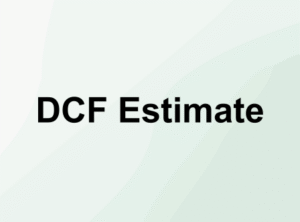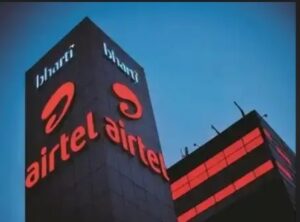
✅ What is a DCF Estimate?
The Discounted Cash Flow (DCF) method estimates the intrinsic value of a company by projecting its future cash flows and discounting them back to their present value using a discount rate (often the company’s cost of capital). This approach assumes that the value of a company is the sum of the cash it can generate over time, adjusted for the time value of money.
In the Blog, the DCF Estimate for MAS Financial Services Ltd. was listed as ~₹350, meaning the fair value of the stock, based on this method, is approximately ₹350 per share. This was calculated assuming:
– 22% AUM (Assets Under Management) CAGR (Compound Annual Growth Rate) for future growth.
– 14% ROE (Return on Equity) as a profitability metric.
– 10% discount rate to account for risk and the time value of money.
Why is it Used?
❇ The DCF estimate provides a fundamental valuation based on the company’s ability to generate cash, independent of market sentiment or trading multiples (like P/E or P/B).
❇ It helps investors assess whether the stock is undervalued (current price < DCF estimate) or overvalued (current price > DCF estimate). For MAS Financial, the DCF estimate of ₹350 suggests a 16% upside from the current price of ₹301 (as of October 9, 2025).
How is it Calculated?
❇ Forecast Cash Flows: Estimate future free cash flows (FCF) based on revenue, margins, and growth assumptions (e.g., 22% AUM growth for MAS Financial).
❇ Apply Discount Rate: Use a rate (e.g., 10%) to discount future cash flows to present value, reflecting risk and opportunity cost.
❇ Sum Present Values: Add up discounted cash flows to get the company’s enterprise value.
❇ Adjust for Debt/Equity: Subtract net debt and divide by outstanding shares to get per-share value
✅ What is a DCF Estimate?
The Discounted Cash Flow (DCF) method estimates the intrinsic value of a company by projecting its future cash flows and discounting them back to their present value using a discount rate (often the company’s cost of capital). This approach assumes that the value of a company is the sum of the cash it can generate over time, adjusted for the time value of money.
In the Blog, the DCF Estimate for MAS Financial Services Ltd. was listed as ~₹350, meaning the fair value of the stock, based on this method, is approximately ₹350 per share. This was calculated assuming:
– 22% AUM (Assets Under Management) CAGR (Compound Annual Growth Rate) for future growth.
– 14% ROE (Return on Equity) as a profitability metric.
– 10% discount rate to account for risk and the time value of money.
Why is it Used?
❇ The DCF estimate provides a fundamental valuation based on the company’s ability to generate cash, independent of market sentiment or trading multiples (like P/E or P/B).
❇ It helps investors assess whether the stock is undervalued (current price < DCF estimate) or overvalued (current price > DCF estimate). For MAS Financial, the DCF estimate of ₹350 suggests a 16% upside from the current price of ₹301 (as of October 9, 2025).
How is it Calculated?
❇ Forecast Cash Flows: Estimate future free cash flows (FCF) based on revenue, margins, and growth assumptions (e.g., 22% AUM growth for MAS Financial).
❇ Apply Discount Rate: Use a rate (e.g., 10%) to discount future cash flows to present value, reflecting risk and opportunity cost.
❇ Sum Present Values: Add up discounted cash flows to get the company’s enterprise value.
❇ Adjust for Debt/Equity: Subtract net debt and divide by outstanding shares to get per-share value.
Limitations
❇Assumption Sensitivity: Small changes in growth rates or discount rates can significantly alter the estimate.
❇Market Disconnect: DCF is theoretical and may differ from market-driven valuations (e.g., P/E-based targets).
❇Data Dependency: Relies on accurate projections, which can be uncertain for NBFCs like MAS due to economic cycles.







